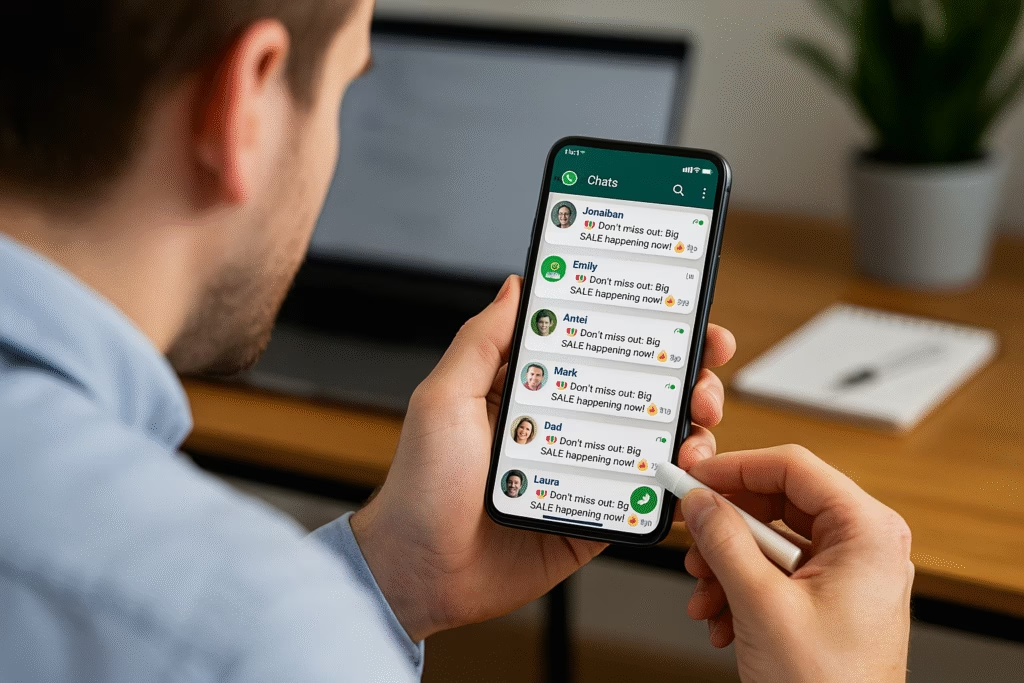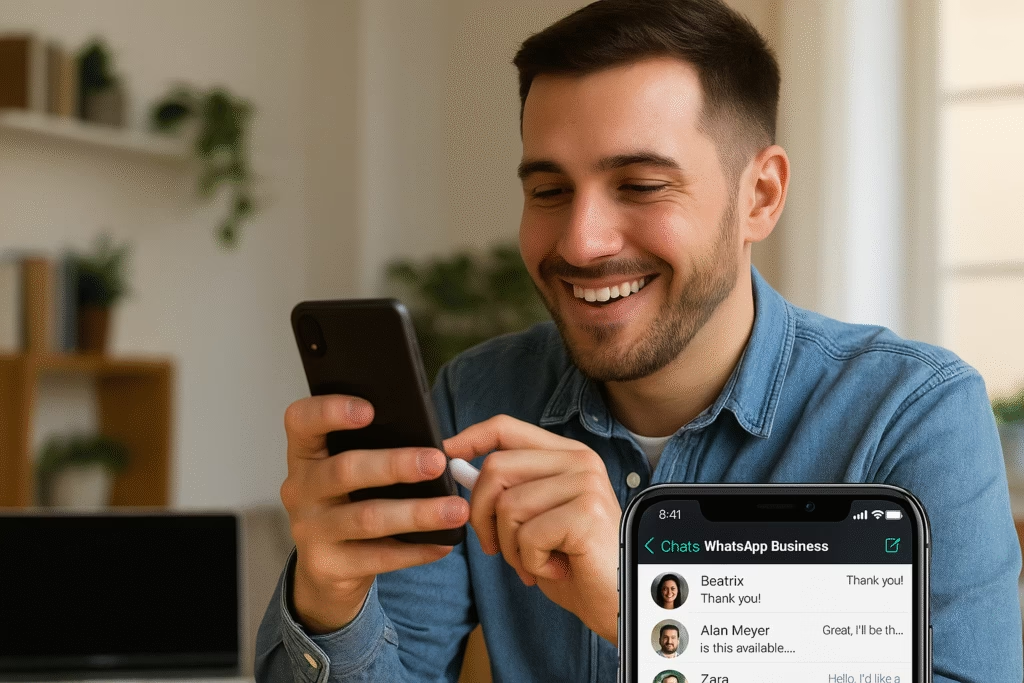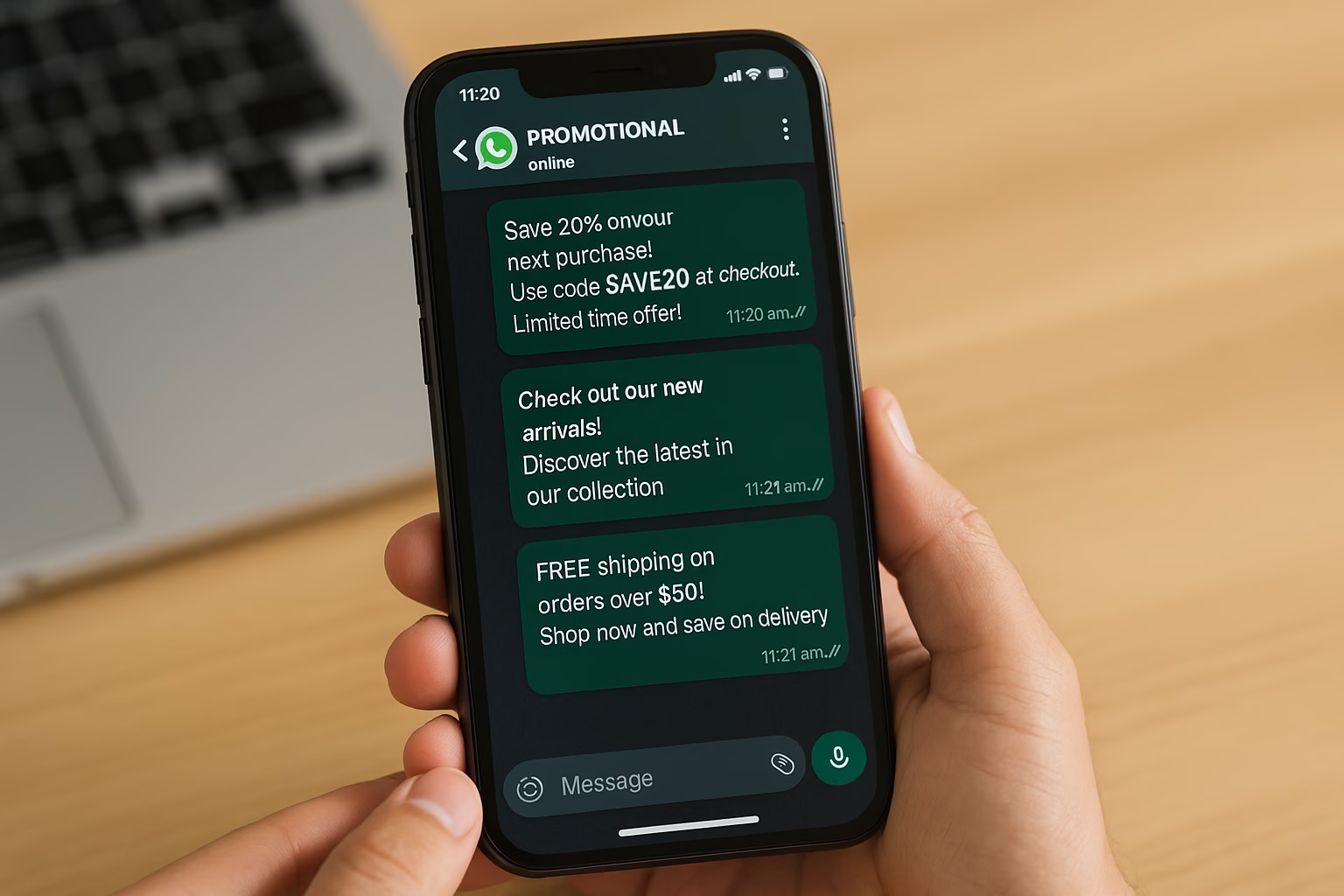Introduction
In today’s digital marketing world, messaging platforms have become a direct line between businesses and customers. Among these, WhatsApp advertising is rapidly growing in popularity because it allows brands to reach users where they already spend their time—chatting on one of the world’s most widely used apps. With more than two billion active users worldwide, WhatsApp offers businesses an unparalleled opportunity to connect, engage, and convert leads in a personalized way. Unlike traditional ads, WhatsApp campaigns feel more conversational, making them ideal for building customer trust.
WhatsApp advertising primarily works through the WhatsApp Business App and WhatsApp Business API. These tools enable companies to share promotions, send product catalogs, provide real-time customer support, and even automate replies through chatbots. This makes the platform especially powerful for small businesses, e-commerce stores, and service providers looking to engage directly with their audience. Unlike email or cold calls, WhatsApp messages are typically opened within minutes, which dramatically increases the chances of meaningful customer interaction.
Another key strength of WhatsApp advertising is personalization. Businesses can segment their audiences, send tailored offers, and create one-to-one interactions that traditional ads can’t achieve. By integrating WhatsApp with Facebook and Instagram ads, companies can also drive traffic directly into conversations, allowing leads to ask questions, clarify doubts, and complete purchases in real time. This creates a seamless marketing funnel where customers feel valued rather than targeted.
In this guide, we’ll explore why WhatsApp advertising matters, the common mistakes businesses make when using it, and a step-by-step process for creating effective campaigns. You’ll also find answers to frequently asked questions and tips for optimizing performance. Whether you’re a small business owner trying to boost local sales or a brand manager aiming for wider reach, mastering WhatsApp as an advertising tool can give you a competitive edge in today’s customer-driven marketplace.
Why WhatsApp Advertising Matters for Businesses
The rise of WhatsApp advertising signals a major shift in how companies approach digital marketing. Unlike traditional ad placements on search engines or social media feeds, WhatsApp provides businesses with direct, personal access to their audience. Customers today want brands to be approachable and responsive, and WhatsApp delivers just that. Messages sent through the platform are often read within minutes, creating a higher engagement rate than email marketing, push notifications, or banner ads.
One reason WhatsApp advertising is so effective is the trust factor. Customers are more likely to open and respond to messages on a platform they use to talk with family and friends. This makes marketing campaigns feel less intrusive and more like part of an ongoing relationship. Businesses can send personalized promotions, share product updates, or even follow up on abandoned carts in a natural and conversational tone. The sense of immediacy and authenticity helps improve customer satisfaction and loyalty.
Another advantage of WhatsApp advertising is its integration with other Meta platforms. Companies can create “Click-to-WhatsApp” ads on Facebook and Instagram that direct users straight into a WhatsApp chat. This bridges the gap between ad impressions and conversations, enabling brands to answer questions and close sales faster. For e-commerce, hospitality, healthcare, and service-based industries, this direct funnel is far more effective than waiting for customers to fill out forms or send emails.
Additionally, WhatsApp supports rich media formats like images, videos, voice notes, and documents, making it easy to share catalogs, how-to guides, and promotional offers. This versatility allows businesses to present their products and services in an engaging way while maintaining a two-way communication channel. With the API, larger organizations can even automate workflows, handle high message volumes, and connect WhatsApp to CRM systems for smarter campaigns.
In short, WhatsApp advertising matters because it combines reach, personalization, and engagement like no other platform. For businesses willing to invest in meaningful customer interactions, WhatsApp is no longer just a chat app—it’s a powerful marketing channel.
Common Mistakes in WhatsApp Advertising
While WhatsApp advertising is highly effective, many businesses make mistakes that undermine their campaigns. One of the biggest errors is treating WhatsApp like a bulk SMS channel. Spamming customers with generic promotions often leads to blocks, reports, and a loss of credibility. Since WhatsApp prioritizes user privacy and security, accounts that misuse the platform risk suspension or bans.
Another common mistake is failing to gain customer consent before sending messages. WhatsApp’s policies require businesses to obtain opt-ins from users. Ignoring this rule not only violates guidelines but also frustrates potential customers. Instead, businesses should encourage users to subscribe voluntarily through websites, social media, or point-of-sale prompts.

Businesses also frequently overlook personalization. Sending the same message to everyone ignores the strength of WhatsApp advertising, which lies in its ability to create one-to-one interactions. Messages tailored with customer names, purchase history, or location-specific offers perform significantly better than broad, untargeted campaigns.
Finally, some companies neglect performance tracking. Without measuring open rates, response rates, and conversion outcomes, it’s impossible to improve campaigns. By failing to analyze results, businesses waste opportunities to refine messaging and better serve their audience. Avoiding these mistakes ensures that WhatsApp advertising remains both compliant and effective in the long run.
Step-by-Step Guide: How to Succeed with WhatsApp Advertising
Step 1: Set Up WhatsApp Business for Advertising
The first step in mastering WhatsApp advertising is to set up the proper foundation using the WhatsApp Business App or API. While the standard WhatsApp app is designed for personal communication, the Business version includes features tailored to brands. It allows you to create a professional profile complete with business name, address, website, and product catalog, all of which make your communication look more credible and trustworthy to customers.
Setting up a professional profile ensures that your brand identity is clear from the first interaction. Instead of customers receiving messages from an anonymous number, they immediately recognize who is contacting them. This is critical in WhatsApp advertising because trust plays a major role in engagement. You can also use labels to organize chats, separating prospects from loyal customers or active leads from inactive ones, which helps streamline your campaigns.
For larger companies, the WhatsApp Business API offers even more power. It enables integration with customer relationship management (CRM) systems, marketing automation tools, and chatbots. This means you can send automated messages, appointment reminders, shipping updates, or promotional offers at scale without losing the personal touch. The API also provides advanced analytics, helping you track the success of your WhatsApp advertising campaigns in real time.
Setting up also involves compliance with WhatsApp’s opt-in policies. Unlike email lists that are often purchased or shared, WhatsApp requires explicit customer consent. Promoting opt-in forms on your website, social channels, or physical stores ensures you build a list of genuinely interested contacts. This not only keeps your campaigns within guidelines but also improves engagement, as customers who opted in are more receptive to your messages.
By taking the time to establish a professional setup, you lay the groundwork for successful WhatsApp advertising. With your business account properly configured, you can focus on creating engaging campaigns that resonate with your audience.
Step 2: Create and Share Engaging WhatsApp Campaigns
Once your business profile is ready, the next stage of WhatsApp advertising is designing campaigns that capture attention and inspire action. Unlike traditional advertising channels, WhatsApp thrives on conversations rather than one-way messages. This means your campaigns should focus on creating dialogues that feel natural and helpful. For example, instead of sending “Buy now!” messages, try “We thought you might like this special offer based on your last order.”
Rich media is another powerful element of WhatsApp campaigns. Sharing images, videos, audio notes, or PDFs adds variety and makes promotions more engaging. A restaurant could send daily menu images, while an online store could share product demo videos. These media-rich messages make customers feel valued and connected, giving WhatsApp advertising a more personal and impactful touch compared to generic digital ads.
Personalization is at the heart of successful campaigns. Segmenting your audience allows you to send tailored offers based on preferences, past purchases, or location. This prevents customers from feeling spammed and increases conversion rates. For instance, offering a discount on winter clothing to customers in colder regions is far more effective than sending the same message to everyone.
Timing also matters. Sending messages during peak engagement hours—like evenings or weekends—can dramatically improve response rates. However, over-messaging is a mistake. Too many notifications can lead to blocks, undermining your WhatsApp advertising efforts. Striking the right balance between consistency and respect for customer time ensures your campaigns remain welcome.
Ultimately, the goal of every campaign should be to provide value. Whether that’s through exclusive offers, helpful tips, or timely reminders, the more useful your content is, the more customers will engage and stay loyal. With creativity and empathy, you can design WhatsApp campaigns that feel less like ads and more like conversations.
Step 3: Track, Analyze, and Optimize Performance
No WhatsApp advertising strategy is complete without tracking and optimization. Measuring performance ensures you understand what’s working, what isn’t, and how to improve future campaigns. Fortunately, the WhatsApp Business API and integrated tools provide analytics on delivery rates, read receipts, response times, and customer engagement. These insights allow you to fine-tune both messaging and targeting.
Start by monitoring open and response rates. A high open rate but low response rate may indicate your messages are seen but not compelling enough to encourage replies. This suggests a need for more engaging calls to action or better personalization. Conversely, if your messages are not being opened at all, review the timing, frequency, or opt-in methods used to build your contact list.
Customer feedback is also valuable in optimizing WhatsApp advertising. Direct responses provide clues about what customers appreciate and what annoys them. If several users request fewer messages, for example, reducing frequency can prevent opt-outs. Incorporating polls or quick surveys into your campaigns can also help gather structured insights without disrupting the user experience.
Integrating WhatsApp campaigns with broader analytics platforms like Google Analytics or CRM dashboards gives you a holistic view of the customer journey. This helps connect WhatsApp interactions to conversions, showing how much revenue your campaigns are generating. With this knowledge, you can allocate budgets more effectively and focus on strategies that deliver results.
Optimization is an ongoing process. By regularly testing message formats, experimenting with different offers, and adjusting your approach based on analytics, you can ensure that WhatsApp advertising continues to evolve with customer needs. This iterative process turns WhatsApp into a long-term growth engine rather than just a one-off marketing tool.
FAQs About WhatsApp Advertising
Is WhatsApp advertising free?
WhatsApp itself is free to use, but WhatsApp advertising isn’t completely free. Businesses can use the WhatsApp Business App at no cost to interact with customers, but more advanced features—like the WhatsApp Business API—may involve costs, especially when sending template messages. Additionally, running “Click-to-WhatsApp” ads on Facebook or Instagram requires an ad budget. While the platform allows free person-to-person messaging, most structured advertising strategies involve some financial investment. However, because engagement rates are high, the return on investment is often well worth the spend.
Can small businesses benefit from WhatsApp advertising?
Absolutely. One of the biggest advantages of WhatsApp advertising is accessibility for small businesses. The WhatsApp Business App allows entrepreneurs to set up professional profiles, share catalogs, and interact with customers without needing advanced tools. For example, local shops can promote daily offers or service providers can confirm appointments directly in chat. Because WhatsApp messages are opened quickly and rarely ignored, small businesses often see better engagement than with emails or traditional flyers. This makes WhatsApp an ideal platform for small, local, or niche businesses looking to grow.
What types of content work best in WhatsApp advertising?
The best-performing content in WhatsApp advertising is personal, engaging, and visually appealing. Text-only promotions can work, but adding images, videos, or PDFs makes campaigns more effective. For instance, restaurants can share menu images, clothing stores can send catalog links, and service businesses can provide quick video tutorials. Short, conversational messages that encourage replies also work better than long, formal announcements. The focus should always be on adding value for the customer, whether through discounts, useful information, or interactive content.
Is WhatsApp advertising safe and secure?
Yes, WhatsApp advertising is secure as long as businesses follow WhatsApp’s rules and best practices. The platform uses end-to-end encryption, meaning messages are private and accessible only to the sender and receiver. However, businesses must ensure they use official WhatsApp Business solutions rather than third-party tools that may compromise security. Respecting user consent is also part of keeping campaigns safe. By only sending messages to opted-in contacts, businesses maintain both security and trust with their audience.
How do I measure success in WhatsApp advertising?
Measuring success in WhatsApp advertising depends on your campaign goals. Key metrics include message delivery rates, open rates, response rates, and conversion rates. For small businesses, success might mean higher engagement or repeat customers. For larger brands, it might involve tracking revenue generated from WhatsApp campaigns using CRM integrations. Analytics tools within the API and Facebook Ads Manager provide detailed reports, helping businesses refine their strategies over time. By consistently reviewing these numbers, companies can identify what works, adjust their approach, and scale successful tactics for greater impact.
Conclusion
WhatsApp advertising has quickly become one of the most effective tools for businesses to connect with customers in real time. By combining reach, personalization, and high engagement, it bridges the gap between traditional ads and meaningful conversations. Unlike email or banner ads, WhatsApp delivers messages directly into a space where users are already active, giving businesses the chance to interact in a natural, human way. This makes it especially powerful for brands that want to build trust and loyalty.

Avoiding common mistakes like spamming, neglecting personalization, or ignoring analytics is crucial for success. Instead, businesses should focus on creating valuable, targeted campaigns that feel like conversations rather than promotions. With the right setup, creative messaging, and continuous optimization, WhatsApp advertising can drive conversions, improve customer retention, and enhance brand reputation. For small businesses, it opens the door to affordable, direct communication, while for larger enterprises, it scales into a sophisticated marketing channel.
As customer behavior continues shifting toward messaging apps, WhatsApp is no longer optional—it’s an essential part of a modern digital marketing strategy. Whether you’re sending personalized offers, providing support, or automating interactions through the API, mastering WhatsApp advertising puts your brand directly in the hands of customers. With a thoughtful, strategic approach, WhatsApp can move from being just a chat app to one of your business’s most valuable growth engines.
📌 Read Similar Topics
For additional insights on WhatsApp marketing and advertising, check out:
Official WhatsApp Business,
HubSpot: WhatsApp Marketing Guide, and
Wikipedia: WhatsApp.
Share this:
- Click to share on Facebook (Opens in new window) Facebook
- Click to share on X (Opens in new window) X
- Click to share on LinkedIn (Opens in new window) LinkedIn
- Click to share on Reddit (Opens in new window) Reddit
- Click to share on X (Opens in new window) X
- Click to share on Threads (Opens in new window) Threads
- Click to share on WhatsApp (Opens in new window) WhatsApp




